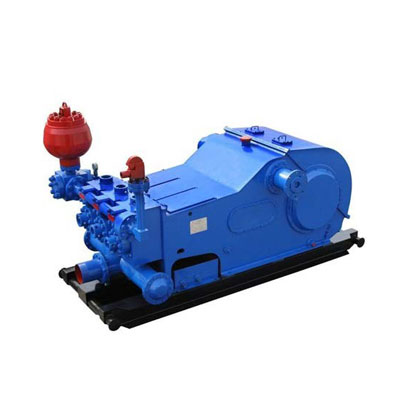In the world of drilling operations, there’s one piece of equipment that stands at the center of it all—the mud pump. Often referred to as the “heart” of the drilling rig, the mud pump plays a crucial role in circulating drilling fluid (mud) to cool the drill bit, remove cuttings, and maintain pressure control. A reliable mud pump is essential for efficient and safe drilling, making it critical to choose the right one for your operations.
In this article, we will explore the importance of mud pumps in drilling and provide insights into how to select the best mud pump to suit your project’s needs.
What Does a Mud Pump Do?
A mud pump serves a vital function in the drilling process. Its primary role is to circulate drilling fluid through the drill string to the bit and back to the surface. This circulation has several key functions:
- Cooling the Drill Bit: Drilling generates significant heat, and the mud pump helps carry the heat away from the drill bit to prevent overheating and premature wear.
- Removing Cuttings: As the drill bit penetrates the earth, it produces cuttings that must be cleared to maintain an efficient drilling process. The mud pump circulates fluid to lift these cuttings to the surface, ensuring smooth operations.
- Pressure Control: Maintaining the correct pressure is vital to prevent blowouts. Mud pumps are essential for maintaining hydrostatic pressure in the wellbore during drilling.
Without a properly functioning mud pump, the entire drilling operation would be compromised, leading to potential equipment failure, increased downtime, and safety risks.
Types of Mud Pumps
There are two primary types of mud pumps used in drilling operations: duplex pumps and triplex pumps. Each has its advantages depending on the specific needs of the operation.
- Duplex Mud Pumps: These pumps have two cylinders and are ideal for smaller to mid-sized operations. They offer high efficiency and are easy to maintain, making them a popular choice for many drilling companies.
- Triplex Mud Pumps: With three cylinders, these pumps are designed for more demanding, high-pressure applications. They are commonly used in deep-water drilling, geothermal drilling, and other high-performance drilling activities. Triplex pumps offer greater reliability under high-pressure conditions and are known for their superior performance in challenging environments.

How to Choose the Right Mud Pump
Selecting the correct mud pump for your drilling project involves considering a variety of factors. Here are some essential considerations to guide your decision:
- Flow Rate: The flow rate of a mud pump determines how much drilling fluid can be circulated through the system. A higher flow rate is essential for deep drilling operations or projects that require a large volume of fluid circulation. Make sure to match the pump’s flow rate with the demands of your drilling operation.
- Pressure Requirements: Drilling at greater depths or in challenging geological formations requires pumps that can operate under higher pressures. It’s essential to choose a mud pump with the necessary pressure capacity to maintain safe and efficient operations. This is particularly critical in offshore and deep-water drilling projects.
- Efficiency and Reliability: Efficiency directly impacts the cost-effectiveness of your operation. A pump that is both reliable and energy-efficient will reduce operational costs and increase the overall uptime of your drilling rig.
- Maintenance and Support: The ease of maintenance is a crucial factor. Regular maintenance is necessary to ensure the longevity of the mud pump. Additionally, having access to support and spare parts is essential to reduce downtime and ensure the pump’s optimal performance.
- Environment and Application: Different drilling environments require different specifications. For example, mud pumps used in offshore rigs must withstand harsh marine conditions, while those used for land-based operations may have different durability and performance requirements. Consider your operational environment when choosing a pump.
Common Mistakes to Avoid When Selecting a Mud Pump
- Underestimating Flow and Pressure Needs: One common mistake is underestimating the flow rate and pressure needs of the drilling operation. Always err on the side of caution and choose a pump with a bit of extra capacity to ensure smooth operations.
- Choosing Based Solely on Cost: While budget is an important consideration, choosing a pump based solely on initial cost can lead to higher long-term expenses. Cheaper pumps may require more frequent repairs or have lower efficiency, which can increase operational costs.
- Neglecting Maintenance Considerations: Many companies focus on the initial purchase price and overlook long-term maintenance needs. Ensure that your mud pump has a good track record for reliability and that maintenance is straightforward and cost-effective.
Conclusion
Choosing the right mud pump for your drilling operation is a critical decision that can impact efficiency, safety, and the overall success of the project. By considering factors such as flow rate, pressure requirements, efficiency, and the environment in which you’ll be drilling, you can select a mud pump that meets your specific needs. Investing in the right pump and committing to regular maintenance will not only enhance the performance of your drilling operation but also extend the life of your equipment.
If you’re ready to upgrade your drilling operations with a reliable mud pump, contact us today to learn more about our selection of high-performance pumps tailored to your needs.